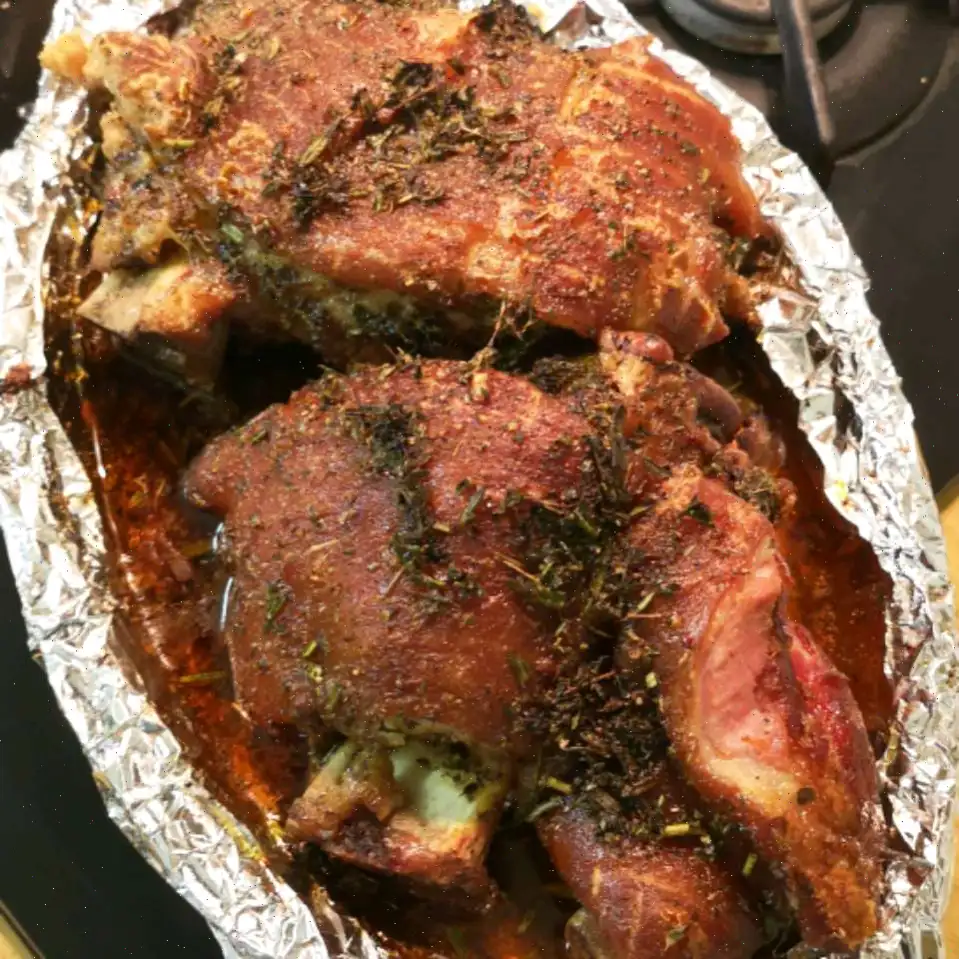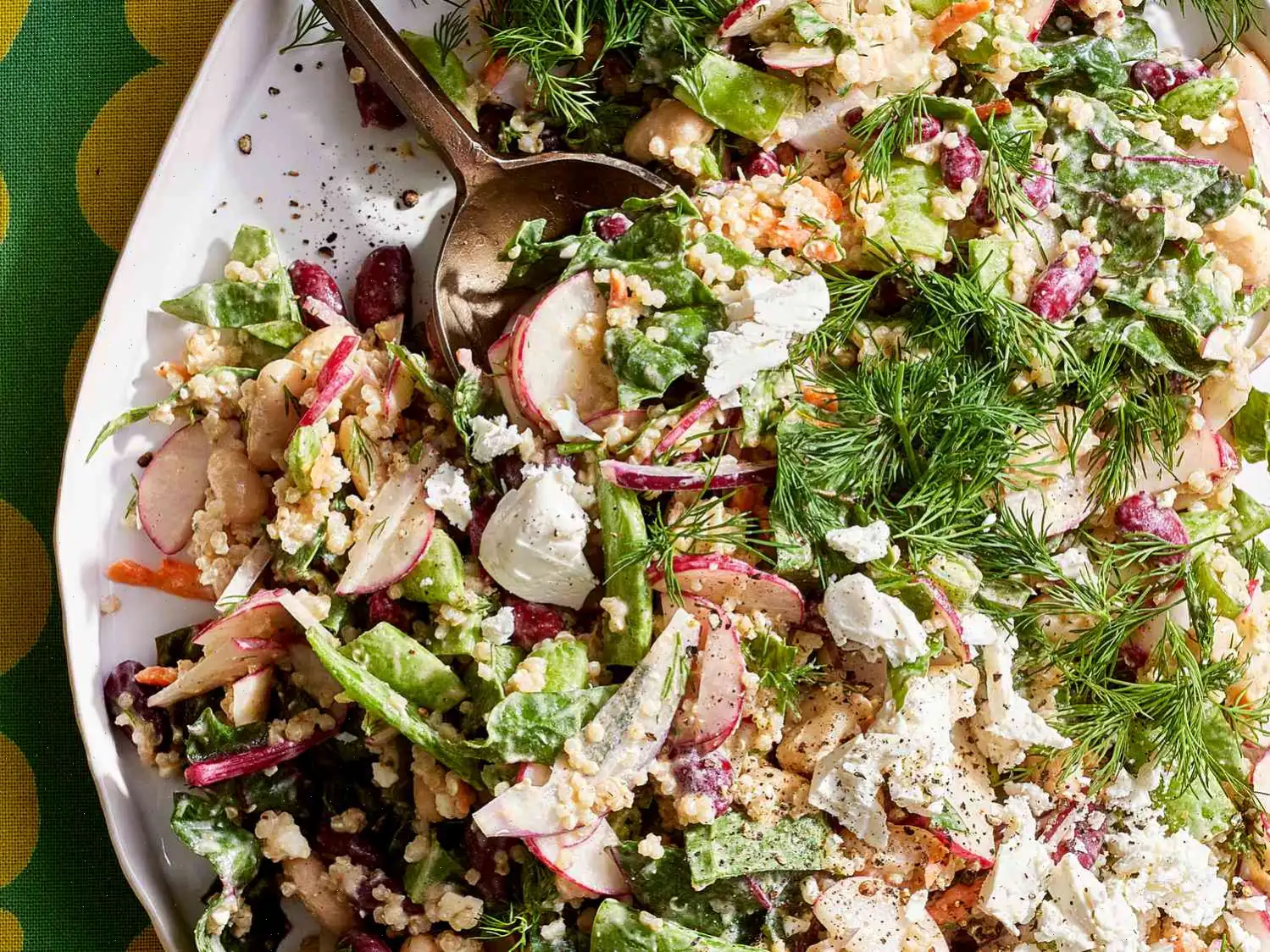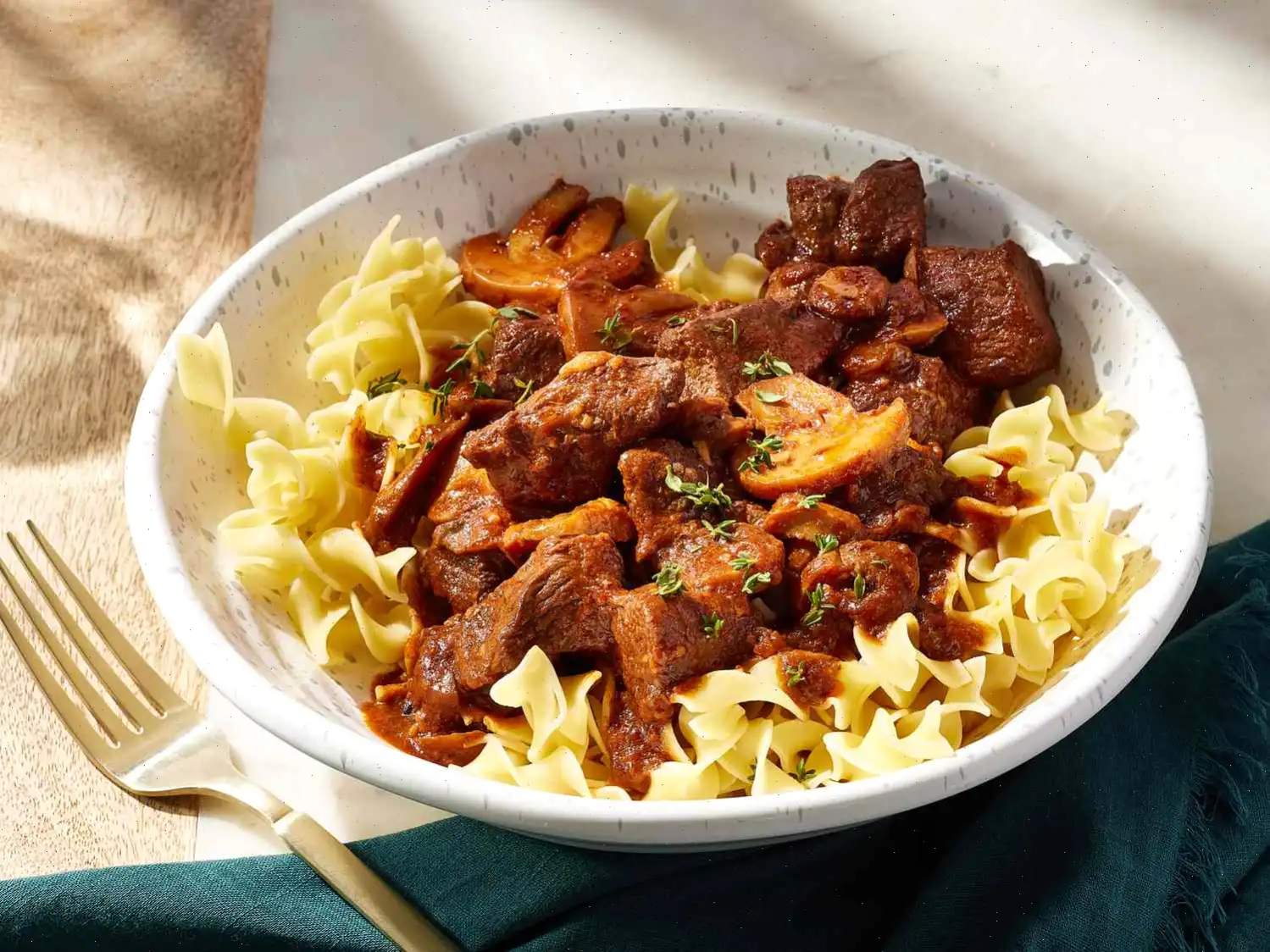
Grillhaxe (Grilled Eisbein, Pork Shanks) Recipe
Ingredients
- 1 cup olive oil
- 2 tablespoons dried marjoram
- 2 tablespoons dried basil
- 2 tablespoons chopped fresh thyme
- 2 tablespoons chopped fresh rosemary
- 2 tablespoons sea salt
- 1 teaspoon paprika
- 1 teaspoon ground black pepper
- 1 teaspoon vegetable bouillon powder
- 6 pork shanks (about 1 1/2 pounds)
Directions
- Preheat your oven to 350F (175C).
- In a bowl, whisk together the olive oil, dried marjoram, dried basil, fresh thyme, fresh rosemary, sea salt, paprika, black pepper, and vegetable bouillon powder until well combined.
- Rub the herb mixture generously over the pork shanks, making sure they are evenly coated.
- Place the seasoned pork shanks on a large baking pan, arranging them in a single layer.
- Roast in the preheated oven for about 3 hours, or until the pork shanks are tender and the outer skin is crispy.
Nutrition Facts (per serving)
| Calories | 28g Fat | 71g Protein | 1g Carbs |
|---|---|---|---|
| 532 | 28g | 71g | 1g |
Percent Daily Values (based on a 2,000 calorie diet)
- Total Fat: 28g (36%)
- Saturated Fat: 6g (28%)
- Cholesterol: 186mg (62%)
- Sodium: 3081mg (134%)
- Total Carbohydrate: 1g (0%)
- Dietary Fiber: 1g (2%)
- Protein: 71g (141%)
- Vitamin C: 1mg (1%)
- Calcium: 21mg (2%)
- Iron: 11mg (62%)
- Potassium: 39mg (1%)
Note: Nutrient information is based on available data and may vary depending on specific ingredient brands or preparations.
Recipe Description: Grillhaxe, or Grilled Eisbein, is a beloved German dish made with tender, slow-roasted pork shanks. The shanks are seasoned with an aromatic rub of marjoram, basil, rosemary, thyme, sea salt, paprika, and vegetable bouillon powder, then roasted until crispy on the outside and juicy on the inside. This dish is perfect for a hearty meal and is often served with sauerkraut or mashed potatoes.
Origin History
Grillhaxe, also known as Eisbein, originates from Germany, where pork is a central component of the traditional diet. The dish has roots in the rural areas of Germany, where pork shanks were a popular and economical cut of meat. Over time, this dish became a staple in German beer halls, particularly in the southern regions like Bavaria, where it is often enjoyed alongside a refreshing pint of lager. The name "Eisbein" translates to "ice leg" in German, a reference to the preserved pork leg, which was historically salted or smoked to extend its shelf life.
Regional Characteristics
Grillhaxe is especially popular in southern Germany, particularly in Bavaria and the city of Munich, where it is often served during festive occasions such as Oktoberfest. In these regions, it is typically paired with traditional sides such as sauerkraut, mashed potatoes, or a bread dumpling known as "Kndel." The slow-roasting process ensures that the meat is both tender and flavorful, with the crispy skin providing a satisfying contrast to the juicy interior. In other parts of Germany, variations of Eisbein may be prepared differently, but the focus on slow-roasting and seasoning remains the same.
Differences from Similar Dishes
Grillhaxe shares similarities with other pork-based dishes from around the world, such as roasted ham or braised pork knuckles. However, what sets Grillhaxe apart is the unique seasoning blend and the method of roasting. The use of marjoram, basil, rosemary, thyme, and other herbs creates a distinct flavor profile that is different from other types of roasted meats. Additionally, the cooking process, which involves slow roasting to achieve crispy skin, gives Grillhaxe a texture that is difficult to replicate with other cuts of pork. Unlike other roasted pork dishes, Grillhaxe is typically served with hearty, robust sides like sauerkraut and potatoes, which complement the rich flavors of the meat.
Where It Is Typically Served
Grillhaxe is commonly served in traditional German beer halls, particularly in Munich, where it is a popular dish during Oktoberfest. It is also a mainstay in German homes, especially for festive occasions or family gatherings. In Germany, you can find Grillhaxe in many local restaurants and breweries, where it is often paired with a cold glass of beer. Outside of Germany, this dish has gained popularity in many countries, particularly in regions with a large German-speaking population, such as the United States, Austria, and Switzerland. It is also often featured at European-themed restaurants and beer gardens worldwide.
Interesting Facts
- The term "Eisbein" refers to a traditional method of preserving pork by salting or smoking it, a technique that dates back to medieval times.
- Grillhaxe is a popular dish during Oktoberfest, where it is often enjoyed with a hearty German beer.
- The crispy skin of the pork shank is considered one of the most delicious parts of the dish, and many people savor it as a crunchy, flavorful treat.
- In addition to being a comfort food, Grillhaxe has cultural significance in Germany, symbolizing hospitality and abundance during festive gatherings.








